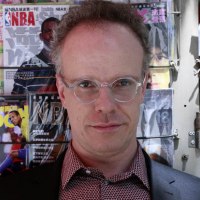“Since 1990, I have gathered information on an unusual species of art: unrealised projects. These roads not taken are a reservoir of artistic ideas: forgotten projects, directly or indirectly censored projects, misunderstood projects, oppressed projects, lost projects, unrealisable projects. Whilst it is no longer possible to ask Calder about his unrealised projects, I thought that it would be interesting to apply this methodology of the unrealised to art history, and this exhibition at Centro Botín presents an exciting opportunity to do this for the first time.”
Calder’s collaborations with leading architects, choreographers and composers of his time resulted in some of his most recognised works, and yet their backstories remain largely unexamined. A number of these important projects went unrealised, including collaborations from the 1930 and 1940s with such luminaries as Wallace K. Harrison, Harrison Kerr and Percival Goodman. The exhibition traces Calder’s creative process in the execution of these projects, from his maquettes for sculpture competitions and world’s fairs to his proposals for choreographed objects and performances and including rare sketches and related ephemera.
Among the unrealised projects shown in the exhibition will be a series of six maquettes made by Calder in 1939 to accompany Percival Goodman’s submission for a proposed Smithsonian Gallery of Art in Washington; and a group of nearly two-dozen bronzes from 1944, made at the suggestion of Wallace K. Harrison for an International Style building and envisioned to stand some 10-12 metres tall in cast concrete. Drawings relating to what Calder termed ‘ballet objects’, including set designs for a proposed ballet with music by Harrison Kerr will be presented and digital animations of several compositions have been specially commissioned for the exhibition.
The exhibition will be accompanied by a fully illustrated catalogue with essays by Hans Ulrich Obrist, Alexander S. C. Rower, and Sandra Antelo-Suarez, among others.




































